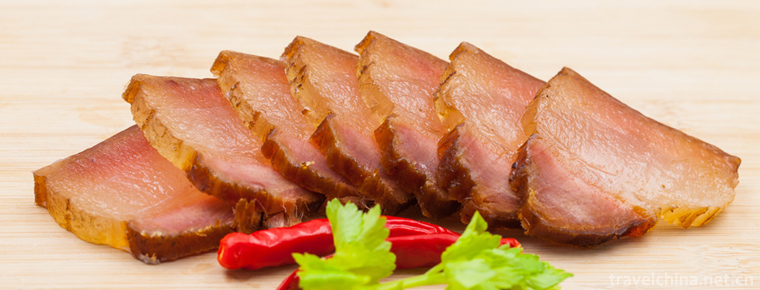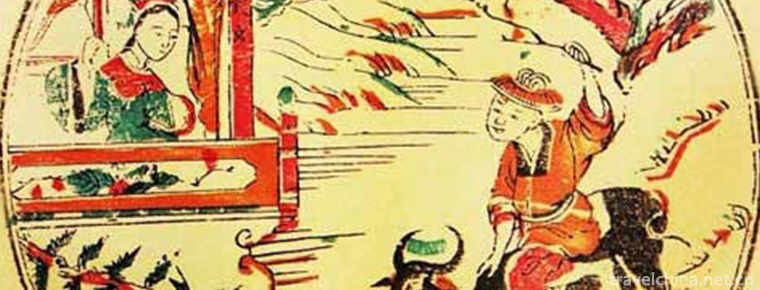Nanping Nanci
Nanping Nanci
Nanping Southern Ci is a traditional form
of music popular in Nanping, northern Fujian Province. It is generally believed
that the Southern Ci in Jiangnan area developed gradually with the local
traditional folk song minor after it was introduced from Suzhou to Nanping in
the Qing and Jiaqing Dynasties. The performance form of Nanping Nanci is
composed of one lead singer, and many other people sit around with different instruments,
and sing in turn according to different lines.
Nanping Nanci has some problems in today's
development. There are few successors and many difficulties. It is urgent to
support and protect Nanping Nanci.
The state attaches great importance to the
protection of intangible cultural heritage. On May 20, 2006, the opera was
approved by the State Council and listed in the first batch of national
intangible cultural heritage list.
Historical Origin
Nanci opera is popular in Nanping area of
Fujian province. Legend has it that it was developed from Tanhuang minor.
During the reign of Qianlong and Jiaqing in the Qing Dynasty (1736-1820),
Tanhuang minor was introduced from Suzhou to Nanping, and combined with the
traditional folk art of northern Fujian to form its own unique style.
Originally in Tanhuang minor, both singing and Bai were in Suzhou "Tuguan
dialect", mainly singing, and sometimes speaking. There are two types of
tunes, major and minor, with eight rhymes of Southern Ci as its basic tone.
Because Tan Spring was directly influenced by Suzhou Kunqu Opera, it retained
some music cards such as crying Yanhui, , ,
. Most of the songs sung in the Qing Dynasty come from Kunqu
Opera, such as Broken Bridge, Qiujiang, Out of the Fortress, Legend of White
Snake, West Chamber, Moonworship and so on. From the middle of Qing Dynasty to
the Republic of China, Nanci developed in Nanping. During the Jiaqing period of
the Qing Dynasty (1796-1820), the first class club was called Jingyixuan.
During the reign of Qing Daoguang (1821-1850), there were "to form a
community", "Tongzhi Decade of Qing Dynasty
(1871),"Sandetang"organized by Catholics in Nanping,
and"Tongyuexuan"in the reign of Qing Guangxu (1875-1908),
and"Heming Society"and"Geng Yunqin Society"in the period of
5-35 (1916-1946) of the Republic of China. In the 26 years of the Republic of
China (1937), Yuankeng Zefang farmers in Shunchang spontaneously organized the
"Lechun Society".
artistic characteristics
Southern Ci is a form of sitting and
singing, with three, five or more singers ranging from Yangqin, Sanxian, Pipa,
Sheng, Sudi, Huhu, gong, cymbal, cymbal, drum and other musical instruments,
singing while playing, mostly in Kunqu opera, its rhythm is graceful and
graceful. Later, in order to make the elegant Kunqu Ci easy to understand,
Nanci gradually changed its long and short sentences to seven-character
sentences in order to adapt to the taste of urban and rural middle and lower
class audiences.
Commonly known as the "Eight Rhymes
Southern Ci", that is, singing eight lines, one rhyme, the ancient name of
the "Eight Rhymes" traditional repertoire are: Hunting Back, Zhaojun
Fortress, White Snake Biography, Monk and Nun Club, Peony to Medicine, Western
Chamber, borrowing clothes to persuade friends, and other plays and folding
operas, after liberation, more than 60 scripts have been sorted out.
Inheritance value
Nan Ci was introduced to Nanping in the
late 18th century. Just after it was introduced, the famous activity class
"Jing Yi Xuan" appeared. It has been more than 200 years since then.
There have been nine generations of inheritance. Its artistic tradition is
quite profound and its artistic vitality is very tenacious. However, there are
some problems in the development of Nanping's Nanci today. There are few
successors and many difficulties. It is urgent to support and protect Nanping's
Nanci.
Successful application
The state attaches great importance to the
protection of intangible cultural heritage. On May 20, 2006, the opera was
approved by the State Council and listed in the first batch of national
intangible cultural heritage list.


-
Chinese bacon
Bacon refers to processed meat processed by salting and then baked....
Views: 157 Time 2018-10-12 -
Slender West Lake
Slender West Lake, formerly known as Guarantee Lake, is located in the northwest suburb of Yangzhou City, Jiangsu Province.
Views: 166 Time 2018-12-06 -
Nanning Zoo
Nanning Zoo, located at 73 East University Road, Nanning City, was built in 1973. It was officially opened to the outside world in 1975 with a total area of 39.1 hectares. It receives more than 1 mill.
Views: 173 Time 2018-12-27 -
Chaibuxi Canyon Scenic Area
Chaibuxi Canyon Scenic Area is located in the eastern part of Wufeng Tujia Autonomous County, with Wulingyuan in the South and Qingjiang River in the north. Zhangjiajie belongs to Wuling Mountains..
Views: 217 Time 2019-01-04 -
Wuhan Haichang Polar Ocean World
Wuhan Haichang Polar Ocean Park is the first Ocean Park constructed by Haichang Group in central China. It is the fifth large-scale theme park covering the concept of polar and ocean.
Views: 182 Time 2019-02-24 -
Xuanzhen Ancient Cave Ecotourism Area
Xuanzhen Gudong Ecotourism Area is located in the north of Qingxin County, about two kilometers away from Qingyuan City. The area of the whole scenic area is 7.8 square kilometers..
Views: 243 Time 2019-02-26 -
Foshan Wood Engraving New Year Pictures
Foshan woodcut New Year's picture is a famous folk New Year's picture in South China and a wonderful flower of Lingnan traditional folk culture. It is as famous as the New Year.
Views: 175 Time 2019-04-29 -
Jinhua Alsophila Nature Reserve
Jinhua Alsophila spinulosa nature reserve is a provincial nature reserve approved by Sichuan Provincial People's Government in 1987. In sifangjinggou, Jinhua Township, 48 kilometers southwest of Rongxian City.
Views: 156 Time 2020-10-15 -
Batang Tuanjie steamed stuffed bun
The Tuanjie steamed bun was not invented by the 18th army when it entered Batang. In the old days, Tuanjie steamed bun, to be exact, was made by Batang ancestors hundreds of years ago. Moreover, it has been handed down to the present day..
Views: 235 Time 2020-12-06 -
Catering and shopping in Chengdu Giant Panda Base
Chengdu Research Base of giant panda breeding has four souvenir shops: "original fashion gift shop of giant panda sun delivery room", "gift shop of giant panda cub playground", "museum gift shop" and "charm theater gift house". The wooden house structure and .
Views: 109 Time 2020-12-13 -
Meishan secondary industry
By the end of 2019, there were 596 Industrial Enterprises above Designated Size, and the added value of industries above designated size increased by 9.8%. In the whole year, 82 kinds of products from industries above Designated Size participated in the statistics,.
Views: 317 Time 2020-12-18 -
Meishan Education
By the end of 2019, there are 824 schools of various types, including 435 kindergartens, 176 primary schools, 165 junior high schools, 26 senior high schools, 17 secondary vocational schools and 5 special schools. By the end of the year, there were 397900 students .
Views: 163 Time 2020-12-18







